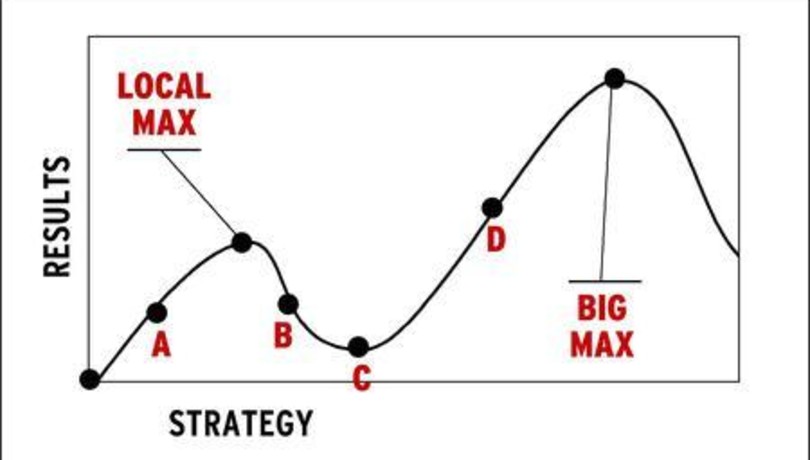Why thinking bigger about data strategy is your only real option
With every passing day the term “Big Data” seems to be going more out of style, but thinking big about data strategy is more important than ever.

With every passing day the term “Big Data” seems to be going more out of style, but <em>thinking</em> big about data is more important than ever.
Seth Godin wrote a great blog post a little over 10 years ago about local maximums. In it, he described the natural trajectory that companies go through as they move from local maximums to global maximums. Along the journey, they see peak performance at the local max and then productivity actually declines until it bottoms out before getting to the big max. While it may look similar in shape to Gartner’s hype cycle curve, the Y axis here is not hype but real, hard business outcomes.

Data productivity plateaus
We see this trend all the time when it comes to how companies approach their customer data. At first, everyone is trying to optimize towards a local maximum, which not only creates a suboptimal global maximum but actually leads to declining results for a while.
You wire up your analytics tool to ingest the relevant data it needs to run the reports you rely on, your attribution tool to ingest the necessary data to understand where users are coming from, your marketing and advertising tools to consume the behavioral data for user segmentation and trigger-based engagement solutions. As each of these tools is implemented, you see productivity gains until you reach a local maximum.
But at some point, you start to see diminishing returns as tactics have started to fatigue and your tools become less productive. To rectify the situation, you start trying to hack integrations and use these tools in sub-optimal ways, which naturally doesn’t work and leads to productivity declines.
A fork in the road to better customer data
You’re now at a critical point where a decision needs to be made, and you have three choices:
- Continue “as is” because you’re worried that any changes may accelerate further declines. Maybe the declines were an anomaly or maybe they weren’t, but you don’t want to make matters worse.</li>
- Change vendors on a one-off basis to solve the immediate problem but avoid the larger problem at hand.</li>
- Embrace a holistic approach, which may force you to take a step backward in order to make a significant advance in your overall productivity.
The “do nothing” approach of scenario one relies on faith and good luck. Maybe that works if you’re the gambling type, or your business unit is not really accountable for results, but for most marketers (particularly marketers in the highly strategic, fast-moving mobile space), number one simply is not an option.
In scenario two, you are only extending the roller coaster but not actually making significant advances. Sure, you can continue to replace tools on a one-off basis but you’re just introducing more cost and complexity, which will worsen the situation over time (not to mention degrade the user experience).
The only real option is the third: Reinvent your approach to data by thinking bigger. Rather than continue to treat analytics data as separate from CRM data and audience data, you invest in a data layer. This allows you to take a holistic approach, eliminating silos by capturing all of your data through a single mechanism and making it easy to send that data to, and extract data from, any executional tool. Want to get data from ZenDesk and send it to Google Analytics to correlate retention with helpdesk response times? You can now do that, and lots more. You’re now on a path for getting beyond Point C to Point D and ultimately to your global max.



